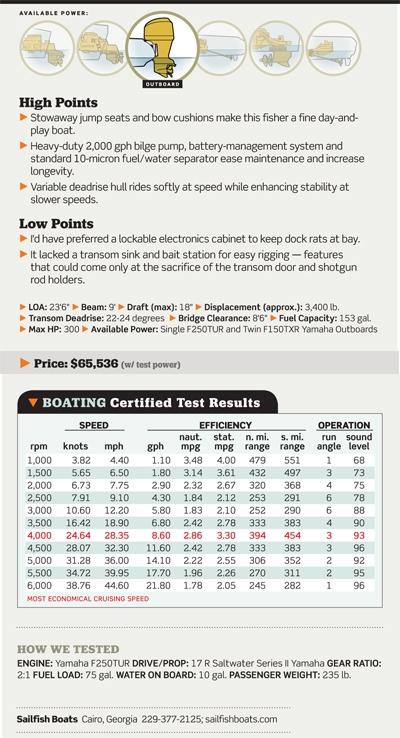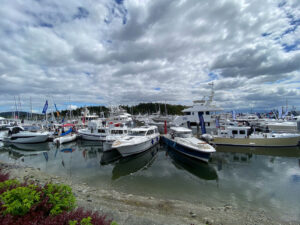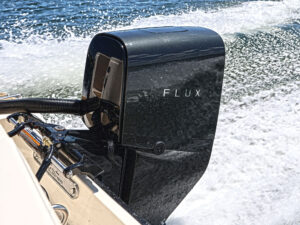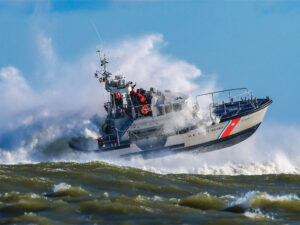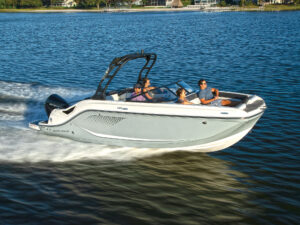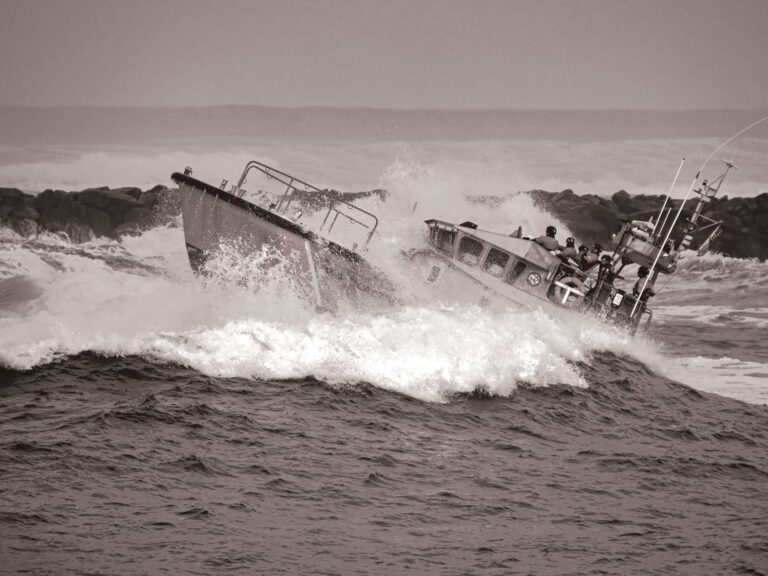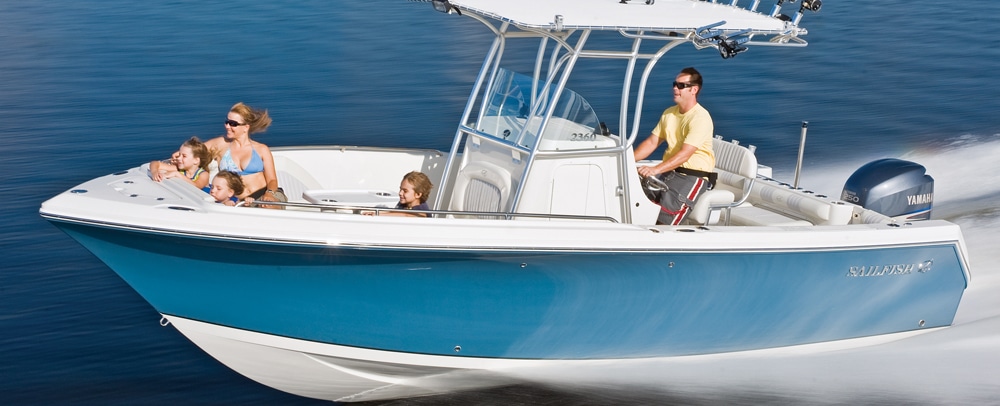
Sailfish 2360 CC Open
Most fish-boat companies call their boat a “family boat” in apology for the compromise between fishability, affordability and versatility. The Sailfish 2360 cc, however, unabashedly accomplishes all three, satisfying tournament kingfishers who want to cruise, wakeboard and chill with their family after the weigh-in.
To be “hard-core” as a fisher, rod holders have to be positioned for easy access and there must be enough of them to meet the objective of tournament angling – which is to maximize your catch by efficiently offering the most baits possible. Ten rod holders in the gunnels and transom do just that. Eight more in the t-top and four in the optional leaning post add even more flexibility. Three rod racks under each gunwale give a down-low approach to safely stowing tackle on the run. With the transom jump seats removed and the padded Yeti cooler slipped under the leaning post, the fighting cockpit is wide open for battle. We could lean deeply over the gunwales by tucking our toes under the inside toe rail and resting our thighs against the thickly padded coaming bolsters. The round 30-gallon livewell, starboard on the transom, keeps baits better than wells with corners. A hefty trophy could easily be hauled over the platform and through the transom door to port.
For day-and-play boating, we liked the way the deck converted quickly by putting into play the optional bowseating cushions and the standard transom jump seats. You can add an optional seat to the front of the console for bigger crowds. Coaming bolsters (aft) also wrap the bow, giving comfortable backrests to all seats. While we were duly impressed with the “playability” of this fisher already, an audible “aha!” was the builder’s reward when he pulled up the ski pylon in the transom, neatly answering the dilemma of a convenient tow point on a center console. The tow point would also be the point from which to tow a big dredge or spreader-bar teaser on a short cord.
While inspecting the 2360, we found heavy-duty, highly polished stainless-steel hardware. It’s quality stuff too, not the metal that looks good in the showroom and then tarnishes or spot-rusts in 12 months when most warranties cease to cover it. Should water splash over onto the deck, enormous scuppers drain the interior quickly, and stainless-steel strainers keep sinkers, shrimp and acorns (should you keep your rig in the driveway) from plugging the pipes. Heavy-duty hardware is also evident in tinned wire that resists the destruction wrought by salt and moisture. Sailfish rigs exclusively with Yamaha, and using the F250 engine allows Sailfish to connect the engine to Yamaha’s reliable command link digital instruments, which can be tuned to your preference of displays: engine, trim, fuel and other data.
Access to the batteries is effortless, which are in their bays beneath the helm. A voltage-sensitive relay monitors both starting and house batteries, and shifts engine-alternator power from the starter to the house should it be drained by electronics, livewell pumps or a booming subwoofer – an ideal option to go with the premium stereo system. All the above means you spend more time running your Sailfish and less time maintaining. Such details are found only on boats built by anglers for anglers – something we’ve complimented Sailfish on before.
Our tests showed the solid rig could easily tap 45 mph at WOT and then give maximum fuel economy by cruising in the high 20s at 4,000 rpm. Sailfish offers an innovative hull style that reverses the strakes from the bottom rather than adding them on. The deadrise is steepest between keel and first strake. Apply power, and the boat lifts naturally and rides softly on the steeper deadrise. At slower speeds, when some boats with constant deadrise tend to wallow or list in response to passengers moving about, this one continues to offer solid stability. The 3.9-second step to plane we experienced is mandatory for yanking a wakeboard rider out of the water. When even more speed was needed, we got it up to 30 mph in 7.5 seconds.
While Sailfish tells us it competes in the family market, we think it undersells its solidly constructed hull, superior hardware and hard-core fishability. We liked it over the equally well-built Century 2300 (equipped and priced comparably to our test boat at $73,049 – yet lacking that extra 6 inches of beam we found on the Sailfish 2360). The 2360 also offered a softer ride than the lighter Pro-Line 24 we tested with a 250 hp Suzuki, though the Pro-Line showed added pep from its more-favorable horsepower-to-weight ratio ($59,077 with an F250).
Thanks to Yamaha’s reputation for reliability and Sailfish’s quality all-composite construction, we think the Sailfish 2360 cc will satisfy the needs of kingfish-tournament hounds and the desires of their family members in more-casual pursuits.
Contact: 229-377-2125, www.sailfishboats.com
